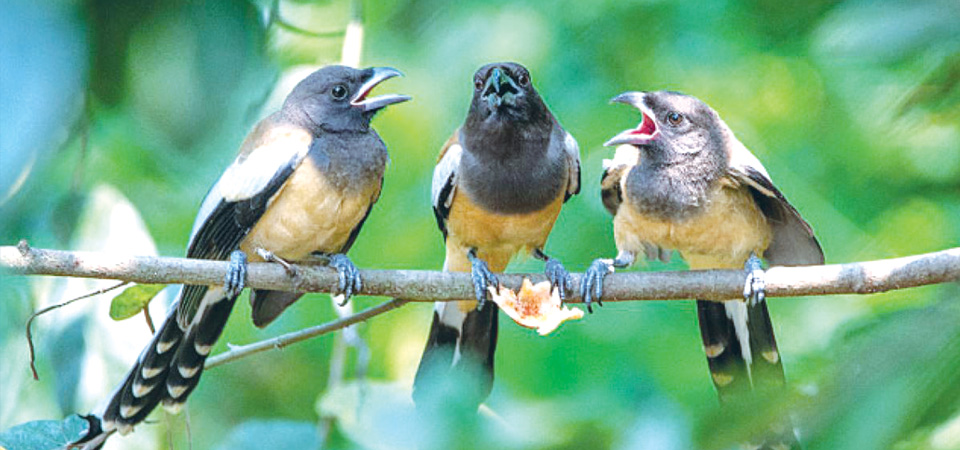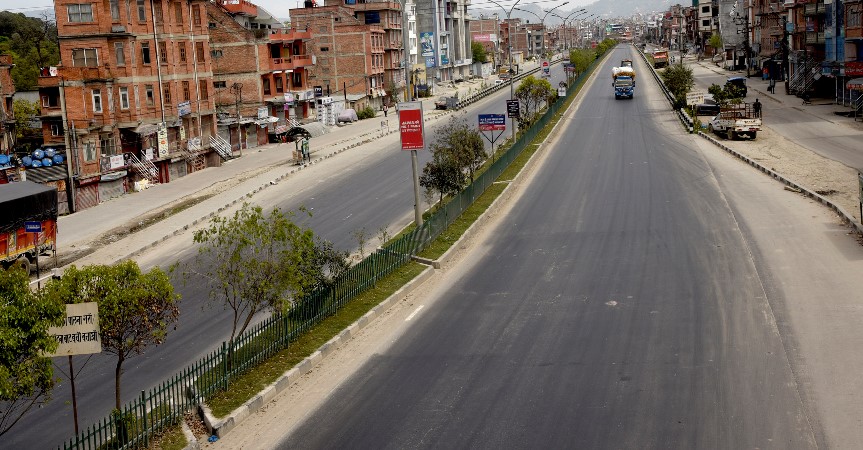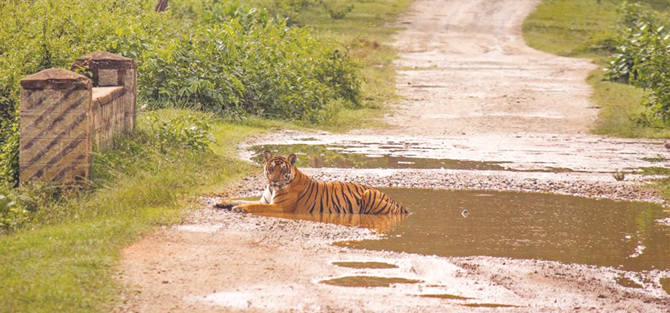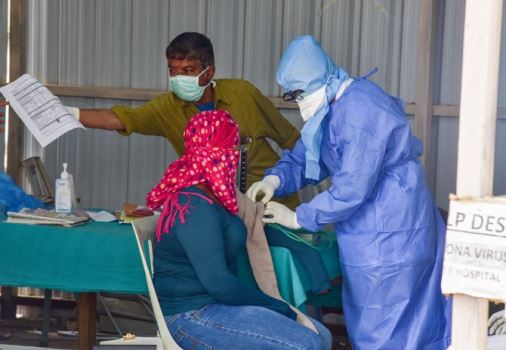Kailali harbours 23 per cent of total bird species of Nepal

By Indira Aryal
Kathmandu, Aug. 12 :Kailali district hosts a large number of bird species -- 114 -- in total of biome restricted assemblage (a significant component of a group of species), which is about 23 per cent of the total recorded species of the country.
Out of the 496 bird species recorded in Kailali, 21 are globally threatened, according to a recently published book “Birds and Birding Hotspots of Kailali.” The book is written by Ornithologist Hiru Lal Dangaura of Bird Conservation Nepal (BCN) and Daya Ram Chaudhary, vice-chairman of the Greater Ghodaghodi Tourism Development Board. The book will provide information on birds and birding hotspots, help to conserve the vulnerable and endangered bird species found in Kailali.
The district, a part of Sudurpashchim Province in Terai plain, also records 168 bird species (almost 19 per cent of Nepal’s birds) as nationally threatened, of which 67 species are thought to be critically endangered and 39 are endangered.
Similarly, 81 species are considered threatened in nationally threatened status. Likewise, four species are on the protected list of the National Parks and Wildlife Conservation Act 2029 (1973). In addition, 65 species are listed in CITES Appendices (Convention on International Trade in Endangered Species), ornithologist Dangaura said talking to The Rising Nepal.
Ghodaghodi Lake Area is one of the popular bird watching sites especially for wintering and migrating species. Likewise, other important bird-watching destinations include Khutiya, Jakhor Lake and Forest Area, Mohana River Corridor and Lower Karnali River Corridor Area are also situated in the district.
According to Dangaura, Ghodaghodi Lake is being developed as an important habitat for birds at a time when natural lakes in the district are drying up.
The Ghodaghodi Municipality is taking initiative to develop the lake as a bird sanctuary and all the conservationists are making efforts to turn the Ghodaghodi wetland area into one of the main habitats of migratory as well as domestic birds.
Even though Kailali is a small district, 62 per cent of the land area is covered by forests, so the district can be the best habitat for bird species, he said.
Kailali is considered a gorgeous natural sanctuary for bird watching as the water body covers an area of 0.62 sq. km. It can also be protected as the number one bird watching destination of the country.
The most common birds seen in the district are Asian Wollyneck, River Lapwing, Oriental Darter, Lesser Whistling-duck, Eurasian Wigeon, Red-naped Ibis, Ferruginous Duck, Grey-headed Fish-eagle.
There are various birding hotspots in the district including
Jakhor Lake and Forest Area, Mohana River Corridor, Laukaha Bhaukaha Lake, Ghodtal and Associated Lake, Koilahi Lake, Kamal Pokhari Lake, Rakhauna Lake, Dolphin Zone, Puraina and Associated Lake, Godawari Chure Area, Karnali Chisapani Area, Khutiya, and Lower Karnali River Corridor Area with the famous Ghodaghodi Lake.
Despite having beautiful spots for birds and birdwatching, there are several threats to wetlands in the district. These can be broadly categorised as habitat destruction and degradation, loss of ecosystem integrity, and depletion of species abundance and diversity, according to the book.
Some natural processes such as sedimentation, habitat loss, discharge of industrial and agricultural runoff, unsustainable harvesting of resources, alteration of plant species composition due to heavy grazing, and colonization of alien invasive plant species are also threatening the wetlands.
Hunting is also a prominent threat to birds in the district. Carcass positing and illegal use of vulture toxic drugs in livestock treatment has also threatened the vultures, Dangaura informed.
Electric shock and collision with power lines kill comparatively large birds like vultures, eagles and storks. Excessive use of pesticides has threatened farmland birds. Pollution and climate change definitively have an impact on the bird community and overall biodiversity. “Loss of large and old trees hampers cavity-nesting birds like the Great Hornbill and Great Slaty Woodpecker,” he added.
In Nepal, at least 886 species of birds have been recorded so far and nearly 600 species breed within the country.
A total of 43 bird species recorded from Nepal are globally threatened, including extirpated and vagrant species, according to the Department of National Parks and Wildlife Conservation and BCN-2018.
Recent News

Do not make expressions casting dout on election: EC
14 Apr, 2022
CM Bhatta says may New Year 2079 BS inspire positive thinking
14 Apr, 2022
Three new cases, 44 recoveries in 24 hours
14 Apr, 2022
689 climbers of 84 teams so far acquire permits for climbing various peaks this spring season
14 Apr, 2022
How the rising cost of living crisis is impacting Nepal
14 Apr, 2022
US military confirms an interstellar meteor collided with Earth
14 Apr, 2022
Valneva Covid vaccine approved for use in UK
14 Apr, 2022
Chair Prachanda highlights need of unity among Maoist, Communist forces
14 Apr, 2022
Ranbir Kapoor and Alia Bhatt: Bollywood toasts star couple on wedding
14 Apr, 2022
President Bhandari confers decorations (Photo Feature)
14 Apr, 2022









